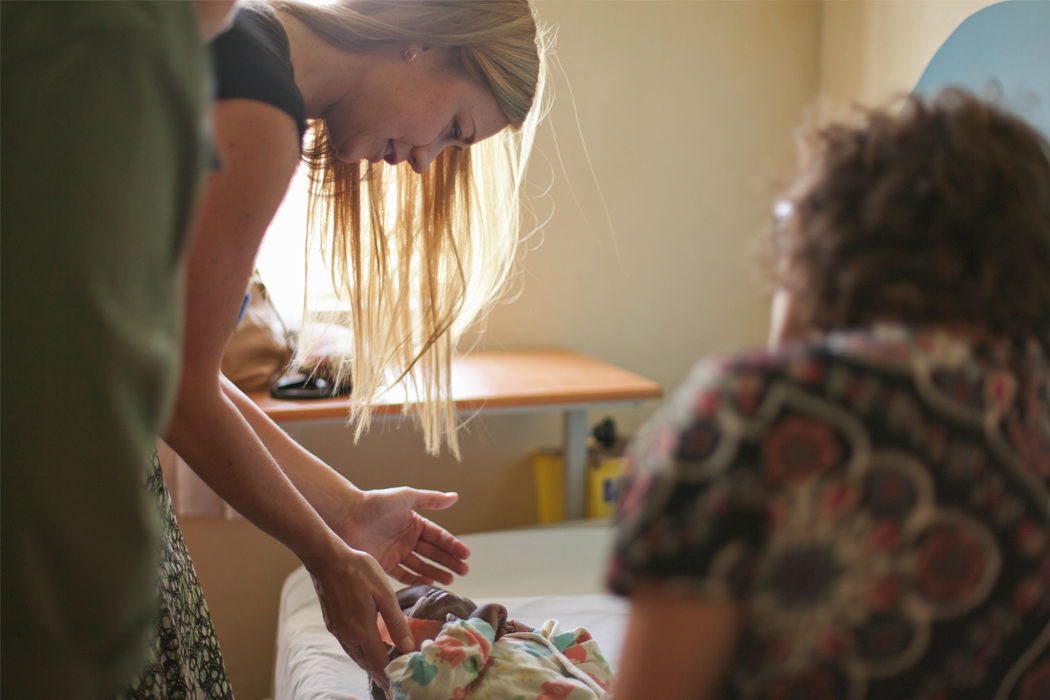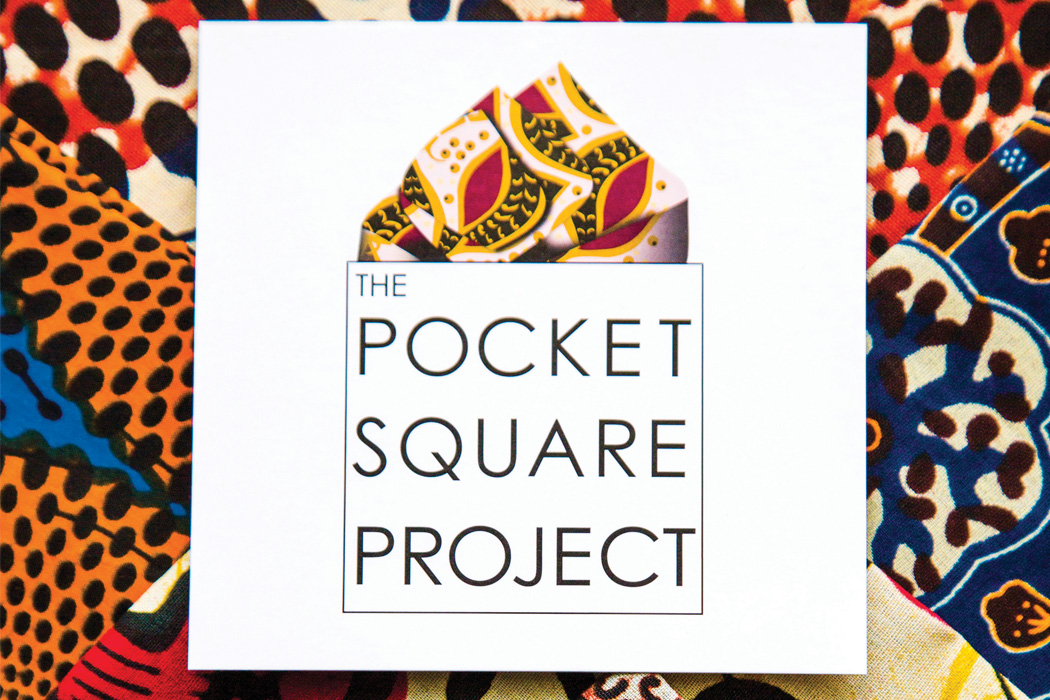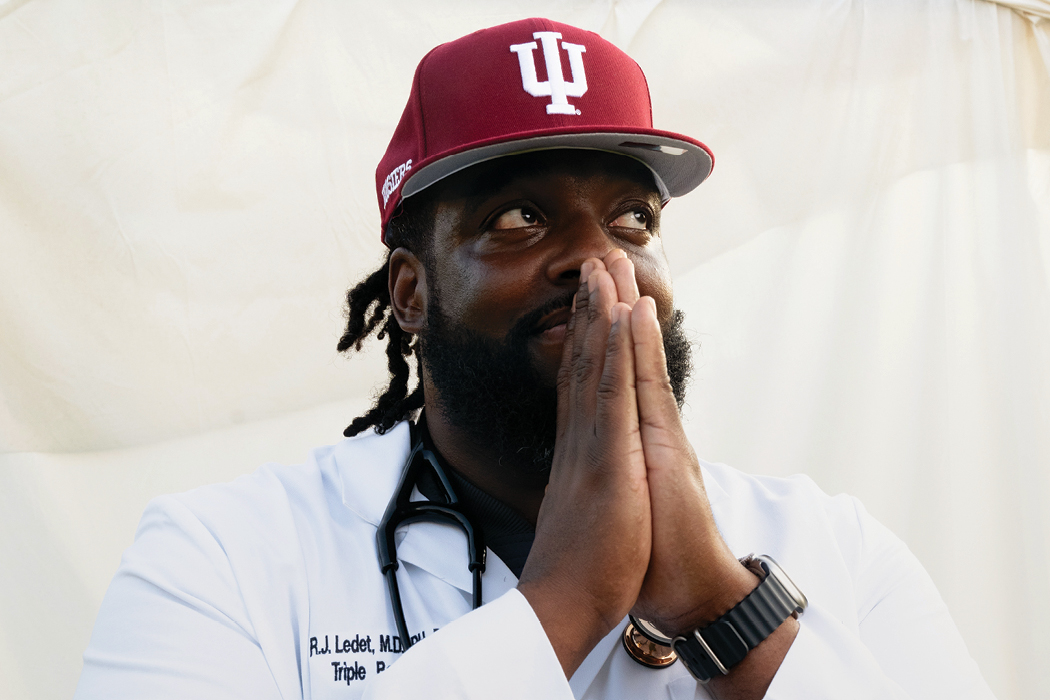A Cause for Faith & Fashion in HIV Care

When Faith arrived with her mother at the pediatric ward of the Kenyan hospital closest to the village where they lived, the 4-year-old was so withered that she weighed just 11 pounds.
Her mother could barely afford the long trip from their home to the hospital, but she knew it was her best, and potentially last, chance to save her daughter.
Sickness wasn’t new to Faith. Her short life had been a long battle with one malady after another. Pneumonia, diarrhea, rashes—her suffering was ceaseless.
Dr. Rachel Vreeman, IU School of Medicine HIV researcher and professor of pediatrics, didn’t need to run tests to diagnose Faith with AIDS—but tests did provide the small relief of certainty.
“Faith was too sick,” Vreeman laments. “She died two days after she was admitted to the hospital. I remember her last breath. Our medicines, our fluids, our nutritional support were all too little, too late.”
Though she couldn’t save the 4-year-old’s life, Vreeman unexpectedly gave Faith’s mother comfort through a small act of kindness. A snapshot that Vreeman took of the two the day they arrived at the hospital was the only photo Faith’s mother had to remember her daughter.
“She was so grateful,” Vreeman remembers. “But I felt like I hardly did anything.
“Faith was the first child I lost to HIV in Kenya. Her story taught me how important it is to be able to access healthcare and treatment. World AIDS Day is December 1, and every World AIDS day, I remember Faith because that’s also her birthday.”
Stories like Faith’s have become all too common for Vreeman, who spends six months of the year in Kenya caring for children and families affected by HIV. She conducts this work through the Indiana University-led AMPATH program, of which she is co-director of research.
As the program’s name suggests—AMPATH is short for “Academic Model Providing Access to Healthcare”—Vreeman’s work goes beyond treating patients to tackling the issues at the source of the crisis.
Vreeman explains, “HIV is largely a disease of poverty and of the underserved that is greatly complicated by malnutrition, not having access to healthcare, and gender inequalities. It’s a disease that disproportionately hurts women and children.”
Today, AMPATH and the IU Center for Global Health, in cooperation with the Kenyan Ministry of Health, train clinicians and specialists to manage chronic diseases globally and to conduct research needed to improve care. That effort fosters the largest pediatric HIV-care program in sub-Saharan Africa, helping more than 25,000 children, as well as 125,000 adults.
“I love working on the challenge that IU has taken on to change global health. I tell medical students and residents all the time that I have the best job in the world,” Vreeman says.
Care Comes Into Fashion
Vreeman’s global health efforts took an intriguingly sartorial turn in her home base of Indianapolis.
In 2014, she co-founded the fashion and philanthropy initiative The Pocket Square Project, which sells pocket squares (and now, special-edition bow ties) made of traditional African kitenge cloth created by Kenyan tailors. Besides offering colorfully and culturally distinct clothing accessories, all proceeds from the $20 pocket squares go to programs that help children like Faith.

Those funds go a long way when you consider that many infected children can be saved with little more than clean water and a $10 antibiotic.
“We want to make a comprehensive and effective system of counseling and support groups available to HIV-infected children and their families in the world’s poorest places, starting with Kenya, so that these children get what they need to have a chance at life,” Vreeman explains.
Establishing these much-needed healthcare infrastructures in impoverished nations is one of Vreeman’s biggest goals, and she considers her work fighting HIV as a barometer for improving global healthcare at large.
“HIV is a great lens with which to see our challenges in global health. If you can provide a healthcare system that will provide access to HIV care, you can do anything else you need to with that healthcare system.”
If Vreeman’s work thus far is any indication, then we should all have more reason for faith.
To learn how you can support IU’s efforts to improve global health, including the AMPATH program in Kenya, visit forall.iu.edu.
This article was originally published in the fall 2015 issue of Imagine magazine.
Tags from the story
Written By
A. Price
A resident of the Hoosier state since grade school, Alex forged a friendship with “tried and true” IU upon becoming a writer at the IU Foundation.



